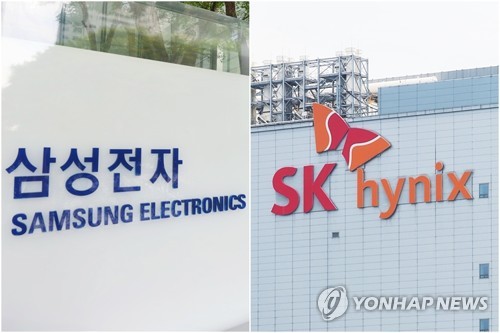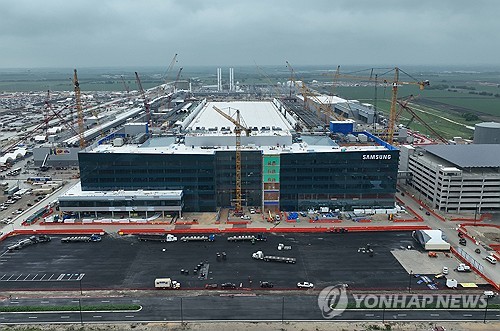(Seoul=Yonhap Infomax) Su Jin Yoo – As the dollar-won exchange rate approaches 1,500 won, expectations are rising that South Korean exporters will benefit. However, the outlook is less optimistic for the semiconductor sector, one of the country’s leading export industries.
If the current high exchange rate persists, the cost of importing equipment and raw materials from overseas will also rise, inevitably impacting investments in the United States. Samsung Electronics Co., South Korea's largest company by market value, and SK hynix Inc., the world’s second-largest memory chipmaker, are either building or planning to build large-scale semiconductor plants in the US.

According to the semiconductor industry on the 26th, major chipmakers such as Samsung Electronics [005930] and SK hynix [000660] are closely monitoring exchange rate movements to assess their impact on business operations.
While tracking currency fluctuations is routine for companies with significant overseas sales, the recent surge in the exchange rate to near 1,500 won has heightened their vigilance.
Industry consensus holds that the impact of exchange rate volatility on the semiconductor business is generally limited.
Most semiconductors are exported, generating revenue in dollars, so a stronger dollar typically boosts won-denominated sales and creates foreign exchange gains.
However, the benefits are not one-sided. The rising cost of imported equipment and raw materials offsets the positive effects of a stronger dollar.
While companies are likely to see net foreign exchange gains when considering both sales and purchases, the overall impact on profit and loss is not considered significant.
Industry sources note that the era when a weaker won was an unqualified boon for exporters has long since passed.
“Given the nature of the semiconductor business, a high exchange rate can be either a positive or a negative,” said an industry official. “It’s favorable in months when sales dominate, but negative when investment outlays are high. In many cases, it’s essentially a zero-sum game,” the official added.

Both Samsung Electronics and SK hynix are currently building or planning to build semiconductor plants in the US, and if the high exchange rate persists, investment costs could exceed initial estimates.
With the lingering threat of US tariffs under former President Trump, companies have little choice but to accelerate local investments, adding to their financial burden.
Samsung Electronics is investing $17 billion to construct a foundry plant in Taylor, Texas. This facility, which Tesla CEO Elon Musk has said will manufacture AI chips for autonomous electric vehicles, is scheduled to begin operations by the end of next year.
SK hynix is investing $3.9 billion to build a packaging plant in Indiana.
Both companies are employing currency hedging strategies to minimize risks from exchange rate fluctuations.
Samsung Electronics maintains a balance between assets and liabilities by currency to reduce exposure, and had nearly 6,000 forward contracts in place as of last year. A 5% change in the exchange rate last year was estimated to impact its profit and loss by 365.3 billion won ($274 million).
SK hynix also uses currency swap and cross-currency interest rate swap contracts to manage currency risk. Last year, a 5% change in the dollar-won rate affected its results by 390.5 billion won ($293 million).
The home appliance sector faces similar challenges.
Although overseas sales account for a large share of revenue, high dependence on imported parts and materials means that cost pressures from a strong dollar cannot be ignored.
This is one reason why companies such as Samsung Electronics and LG Electronics Inc. are expanding their global production bases.
sjyoo@yna.co.kr
(End)
Copyright © Yonhap Infomax Unauthorized reproduction and redistribution prohibited.

